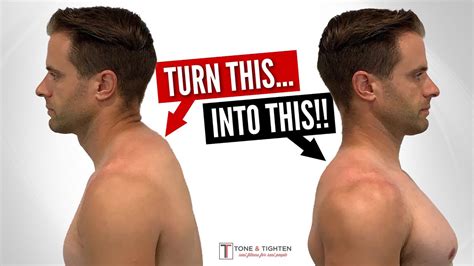How to Get Rid of a Neck Hump (Dowager's Hump): Exercises, Posture, and More
A neck hump, also known as a dowager's hump or cervical kyphosis, is a noticeable curvature of the upper spine. It's characterized by a rounded upper back and a forward-head posture, often leading to discomfort and impacting appearance. While genetics play a role, poor posture and weakened muscles are significant contributing factors. This comprehensive guide will explore effective methods to reduce or eliminate your neck hump.
Understanding the Cause of a Neck Hump
Before diving into solutions, let's understand what contributes to this condition. Several factors can lead to the development of a neck hump:
- Posture: Slouching, hunching over computers, and prolonged periods of poor posture weaken neck and back muscles, leading to the forward curvature.
- Osteoporosis: Weakening of the bones can contribute to spinal compression and the formation of a hump.
- Genetics: Family history of poor posture or spinal curvature can increase your risk.
- Muscle Imbalance: Weakness in the deep neck flexor muscles and tightness in the chest muscles can pull the head and neck forward.
- Spinal Degeneration: Age-related wear and tear on the spine can contribute to the development of a hump.
Effective Ways to Reduce Your Neck Hump
Addressing a neck hump requires a multifaceted approach, combining exercises, posture correction, and potentially medical interventions.
1. Exercises to Strengthen and Stretch
Strengthening Exercises: These exercises target the muscles responsible for supporting your posture.
- Chin Tucks: Gently pull your chin backward, as if making a double chin. Hold for a few seconds, and repeat.
- Neck Retractions: Slowly pull your head back, keeping your chin parallel to the ground. Hold and repeat.
- Shoulder Blade Squeezes: Squeeze your shoulder blades together, hold, and release. This strengthens the upper back muscles.
- Plank: This classic exercise strengthens your core, which is crucial for proper posture.
Stretching Exercises: These exercises target tight muscles that contribute to poor posture.
- Chest Stretches: Extend your arms out to the sides and gently push them back, feeling a stretch across your chest.
- Shoulder Stretches: Reach one arm across your body and hold it gently with the opposite hand, pulling it toward your chest.
- Neck Stretches: Gently tilt your head to one side, feeling the stretch in the neck. Repeat on the other side.
2. Posture Correction Techniques
- Be Mindful: Consciously check your posture throughout the day. Sit upright with your shoulders back and your chin parallel to the ground.
- Ergonomic Setup: Ensure your workspace is ergonomically sound. Your monitor should be at eye level, and your chair should offer adequate support.
- Stand Tall: Practice good standing posture. Imagine a string pulling you up from the crown of your head.
- Use Posture Support: Consider using a posture corrector to help you maintain proper alignment. However, it's crucial to use these in conjunction with strengthening and stretching exercises, not as a sole solution.
3. Lifestyle Changes
- Weight Management: Excess weight can put extra strain on your spine. Maintaining a healthy weight can alleviate some pressure.
- Regular Exercise: Overall physical activity strengthens muscles and improves posture.
- Stress Management: Chronic stress can lead to muscle tension and poor posture. Practice stress-reducing techniques like yoga or meditation.
4. When to Seek Medical Advice
If your neck hump is causing significant pain, limiting your range of motion, or is accompanied by other symptoms, it's crucial to consult a doctor or physical therapist. They can diagnose the underlying cause and recommend appropriate treatment options, which may include:
- Physical Therapy: A physical therapist can design a personalized exercise program and provide manual therapy to improve posture and reduce pain.
- Medication: Pain relievers or muscle relaxants may be prescribed to manage pain and inflammation.
- Injections: Injections of corticosteroids can reduce inflammation in the affected area.
- Surgery: In rare cases, surgery may be necessary to correct severe spinal deformities.
Disclaimer: This information is for educational purposes only and should not be considered medical advice. Always consult a healthcare professional before starting any new exercise program or treatment plan. Remember that consistency is key; gradual improvement is more sustainable than quick fixes. By incorporating these strategies into your routine, you can significantly improve your posture and reduce the appearance of a neck hump.
